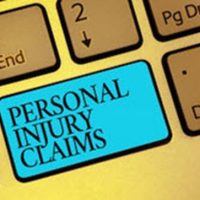Understanding Subsequent Remedial Measures

If you are in an accident where you were injured on a dangerous condition on a Defendant’s property, you may have an idea: what if that dangerous condition was corrected by the property owner, and what if you could show that the property owner fixed or repaired what once was the dangerous condition that injured you?
n other words, isn’t proof that someone fixed something great evidence that it was broken or dangerous in the first place?
Not So Fast
The law doesn’t allow you to use this kind of evidence in court. Showing that someone fixed what was once a dangerous condition is called a “subsequent remedial measure” under the Tennessee Rules of Evidence and it is generally not admissible in court.
The reason why such evidence is not admissible at trial is that society wants to encourage people to fix dangerous conditions on their property. If people knew that fixing something could be used against them to show that they did something wrong in the first place, people would be discouraged from fixing or repairing dangerous conditions.
This makes sense, but it can be disheartening for a Plaintiff seeking to show that something was defective or dangerous on a Defendant’s property. But fear not. There are a few exceptions to the rule that prevents the admission of subsequent remedial measures.
Control or Ownership
One exception deals with the issue of control. In some cases, Defendants claim that the area where the victim was injured wasn’t on the Defendant’s property or that the Defendant did not control that part of the property. When a Defendant does this, it can open the door to allowing evidence of subsequent remedial measures into evidence, because the evidence is being used to show ownership or control.
Feasibility of Repairs
Often, Defendants say that they couldn’t make the property safer; that it would be impossible, or way too costly or impractical to make those repairs. They argue that it would be totally unreasonable to expect them to remedy the dangerous condition on the property.
If they do say that, the victim can now use evidence of a subsequent repair or remedial measure to show that, in fact, it was easy for the Defendant to make repairs because the Defendant already made the repairs.
Duty
In some cases, the property owner may argue that it had no duty to protect the victim from injury.
But property owners can create duties where there would otherwise be none. For example, a property owner may have no duty to have a lifeguard at a pool—but if it has a lifeguard, the lifeguard has a duty to act reasonably but with due care.
So, if the subsequent remedial measure (the repair) can help show that the Defendant created a duty towards the victim, that evidence can now be admitted and used for that purpose as well.
Getting evidence admitted is an important part of your injury trial. We can help. Call the Knoxville personal injury attorneys at Fox Farley Willis & Burnette, PLLC, today.
Sources:
advocatemagazine.com/article/2022-march/admitting-subsequent-repairs-into-evidence
law.cornell.edu/wex/subsequent_remedial_measures
